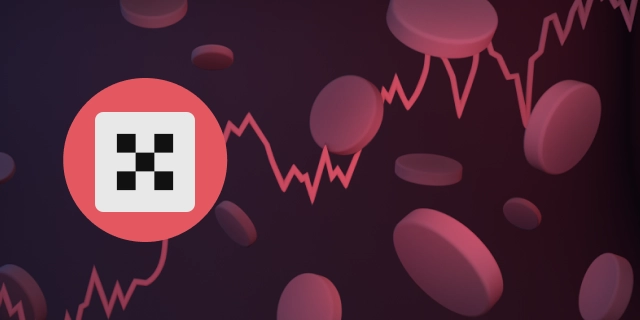Exchange your crypto now
What Is the Tezos price prediction today
AT A GLANCE
- In 2025, Tezos price is expected to reach $1.424, according to some experts
- 2026 promises to be turbulent, with prices ranging from $0.315 to $2.085, with WalletInvestor predicting a breakthrough leading to a price rise to $2.085
- By 2030, XTZ price can hit $1.424
Tezos fundamental analysis
Tezos (XTZ) is a cryptocurrency and blockchain platform. It was designed to be a self-amending blockchain, allowing for on-chain governance to upgrade the protocol without requiring hard forks. Tezos aims to provide a platform for smart contracts and decentralized applications (DApps) similar to Ethereum.
Tezos was founded by Arthur Breitman and Kathleen Breitman. The initial white paper for Tezos was released in September 2014. The development of Tezos began with the idea of creating a self-amending blockchain, allowing for on-chain governance and protocol upgrades without the need for hard forks.
The Tezos initial coin offering (ICO) took place in July 2017 and raised a significant amount of funds. The mainnet for Tezos was launched in June 2018. Arthur and Kathleen Breitman, along with the Tezos Foundation, played key roles in the development and launch of the Tezos blockchain.
Tezos uses a proof-of-stake consensus algorithm called Liquid Proof-of-Stake (LPoS), where token holders can participate in the consensus process and earn rewards for securing the network. In a proof-of-stake system, validators (those who create new blocks and confirm transactions) are chosen to create new blocks and validate transactions based on the number of tokens they hold and are willing to "stake" as collateral.
Tezos uses a delegated proof-of-stake mechanism where token holders can delegate their tokens to validators who then participate in the consensus and block creation process on behalf of the delegators. This is designed to encourage token holders to participate in the network's security and governance.
One of the distinctive features of Tezos is its ability to evolve and upgrade itself through on-chain governance. This means that protocol upgrades can be proposed, voted on, and implemented directly within the Tezos network without requiring hard forks. This is intended to make the platform more adaptable and avoid the kind of contentious hard forks that have occurred in other blockchain projects.
Tezos is designed to be a self-amending blockchain, enabling upgrades and improvements to be proposed, debated, and implemented through on-chain mechanisms.
Similar to Ethereum, Tezos supports smart contracts, which are self-executing contracts with the terms of the agreement directly written into code. Developers can use Tezos to create decentralized applications (dApps) and execute smart contracts on its blockchain.
Tezos has its own programming language for smart contracts called Michelson. Michelson is a low-level stack-based language designed for formal verification, which is a process to ensure the correctness of the code. Formal verification can enhance the security of smart contracts by mathematically proving their correctness.
Tezos places a strong emphasis on formal verification, a process that uses mathematical methods to rigorously prove the correctness of smart contracts. This can enhance security by reducing the risk of vulnerabilities and bugs in the code.
The Tezos blockchain stands out due to its adoption by prominent enterprises. In September 2020, the French banking behemoth Societe Generale revealed its intention to leverage the Tezos blockchain for exploring central bank digital currency experiments.
Additionally, major cryptocurrency exchanges like Binance and Coinbase have introduced support for Tezos staking. This means users can earn rewards based on their holdings of XTZ, a feature not commonly found across various digital assets.
The Tezos Foundation is a non-profit organization based in Switzerland that plays a significant role in developing and promoting the Tezos blockchain. The Tezos Foundation was established in 2018 in Zug, Switzerland. Its primary purpose is to support the long-term development and adoption of the Tezos blockchain.
The foundation holds and manages a substantial endowment of funds, primarily in cryptocurrencies, which were raised during the Tezos initial coin offering (ICO) in 2017. These funds are intended to be used to support the ongoing development, research, education, and community initiatives related to Tezos.
Tezos (XTZ) is the native cryptocurrency of the Tezos blockchain. XTZ plays a crucial role in securing the Tezos blockchain through its proof-of-stake consensus mechanism. Token holders can participate in consensus by staking their XTZ. XTZ holders also have governance rights, allowing them to propose and vote on protocol upgrades through a decentralized governance process. This on-chain governance is a distinctive feature of Tezos.
The total supply of XTZ is 979,123,542 tokens, and as of November 20, 2023, the circulating supply of XTZ is 958,103,356 tokens.
Major cryptocurrency exchanges like Binance and Coinbase support Tezos staking, allowing users to earn additional XTZ by participating in the network's consensus.
Tezos live price chart
At the end of May 2023, the XTZ price chart was already going through a long-lasting downtrend. At the very end of the month to swap XTZ traders paid $0.93, and the price kept going down, reaching $0.83 by June 10. After this point the XTZ price chart dropped much lower, losing a lot of value in a matter of days. In just 3 days on June 13 to buy XTZ traders already paid only $0.72.
For a week the XTZ price chart stayed stable and then after June 20 started growing, first jumping to the price level of $0.76 and continuing to move up. By June 25 the price of the XTZ token reached $0.83. From this point the uptrend continued in the series of ups and downs, taking the price of the Tezos hative token to $0.91 by July 14. The token price couldn’t remain at this high level and declined.
For the next month, the XTZ price chart continued moving downwards, reaching $0.79 by August 13. After going slightly up to $0.80 the next day the XTZ price chart dropped $0.70 by August 18, and even for this low level continued moving downwards. Almost a month later the XTZ was trading for around $0.70 but made a short dip to $0.64 on September 12.
Even though the XTZ price recovered to $0.68 by September 16, in the following period the Tezos price chart was moving downwards again. On September 28 the XTZ price reached $0.65, then it recovered some of the losses in the coming days, trading for about $0.68 at the beginning of October, and then kept moving downwards till the end of the month.
By October 21 to buy XTZ tokens traders paid only $0.65. After reaching this low point, the Tezos network’s native token price went up and reached $0.95 by November 14. That was the highest point of the period and after reaching it the XTZ price went down to $0.83 and remained there for a while, still showing signs of a possible uptrend in the near future.
Tezos technical analysis
Exchange your crypto now
Tezos price prediction
Tezos price predictions summary
Tezos price prediction for 2025
Tezos price prediction for 2026
Tezos price prediction for 2027
Tezos price prediction for 2028
Tezos price prediction for 2030
Summary
About SwapSpace
SwapSpace is a cryptocurrency exchange aggregator that allows to swap over 3350 cryptos with both fixed and floating rates. We gather the rates of major crypto exchanges on the market onscreen and let our users compare and choose whatever option they like the most. We don’t add any fees over the partners’ rates, which makes the exchanges via SwapSpace profitable. The exchange time is no longer than at any of our integrated services starting from 10 minutes. SwapSpace support works 24/7.Exchange your crypto now




Leave a comment